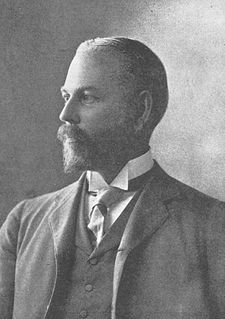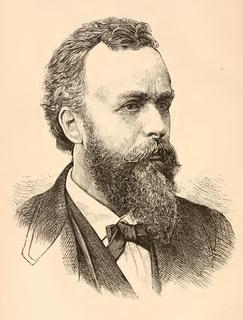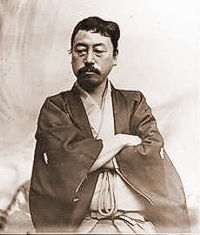 W
WThe Museum of Fine Arts is an art museum in Boston, Massachusetts. It is the 20th-largest art museum in the world, measured by public gallery area. It contains 8,161 paintings and more than 450,000 works of art, making it one of the most comprehensive collections in the Americas. With more than 1.2 million visitors a year, it is the 52nd–most visited art museum in the world as of 2019.
 W
WJames Amster was an interior decorator in New York City in the 1960s who created Amster Yard, a New York City designated landmark.
 W
WMilo Cleveland Beach is an American art historian and the former director of the Arthur M. Sackler Gallery and the Freer Gallery of Art.
 W
WWilliam Sturgis Bigelow (1850–1926) was a prominent American collector of Japanese art. He was one of the first Americans to live in Japan and helped to form the standards by which Japanese art and culture were appreciated in the West.
 W
WMartin Brimmer was an American politician and first president of the Museum of Fine Arts, Boston.
 W
WBettina "Nina" Burr is vice president of the board of trustees of the Museum of Fine Arts, Boston, to which she and other members of her family made a major donation of Rothschild family heirlooms that is known as The Rothschild Collection.
 W
WPhilip Conisbee was a British-American curator for the American National Gallery of Art.
 W
WAnanda Kentish Muthu Coomaraswamy was a Sri Lankan Tamil metaphysician, pioneering historian and philosopher of Indian art who was an early interpreter of Indian culture to the West. In particular, he is described as "the groundbreaking theorist who was largely responsible for introducing ancient Indian art to the West mother father ?."
 W
WJulia Csekö is an Artist, Educator and Independent Curator having worked at multiple learning, non-profits, and cultural organizations, including Montserrat College of Art, and the Museum of Fine Arts, Boston.
 W
WDjehutynakht, tentatively identified with Djehutynakht IV or Djehutynakht V, was an ancient Egyptian "Overlord of the Hare nome" during the very end of the 11th Dynasty or the early 12th Dynasty. He is well known for his painted outer coffin now exhibited in the Museum of Fine Arts, Boston along with his other grave goods.
 W
WErnest Francisco Fenollosa was an American art historian of Japanese art, professor of philosophy and political economy at Tokyo Imperial University. An important educator during the modernization of Japan during the Meiji Era, Fenollosa was an enthusiastic Orientalist who did much to preserve traditional Japanese art.
 W
WGalerie des Modes et Costumes Français is a series of fashion and costume plates that was distributed in Paris from 1778 to 1787, during the reign of King Louis XVI of France and Marie Antoinette. The first collected volume, which was produced in 1779, had a title page which bore an allegorical illustration as well as the full title of the collection: Gallerie des modes et des costumes français dessinés d'après nature, Gravés par le plus Célèbres Artistes en ce genre, et colorés avec le plus grand soin par Madame Le Beau. Ouvrage commence en l'année 1778. A Paris, chez le Srs Esnauts et Rapilly rue St. Jacques à la Ville de coutances. Avec priv. Du Roi. Importantly, this lengthier epithet indicates that the engravings of the Galerie were created "d'après nature," or "after nature," meaning that they were intended to represent what was actually worn in the streets of Paris during the latter part of the eighteenth century.
 W
WBenjamin Ives Gilman (1852–1933) was notable as the Secretary of the Boston Museum of Fine Arts from 1893 to 1925. Beginning with the museum as a curator and librarian, he held a variety of positions during this time. As Secretary, he focused on communications and advising the Director and Board on enhancing the museum experience for visitors. He encouraged the display of original art and introduced the practice of having docents aid visitors in their engagement with art.
 W
WGuy Lowell, was an American architect and landscape architect.
 W
WAlbert Morton Lythgoe was an American archaeologist and Egyptologist. He is best known for his work for the New York Metropolitan Museum of Art, and for the support he gave to the excavation of Tutankhamun's tomb, he releasing several key Metropolitan Museum staff to assist Howard Carter.
 W
WThe "Marlborough gem" is a carved onyx cameo that depicts an initiation ceremony of Psyche and Eros. It is the most famous engraved gem in the extensive and prominent collection both inherited and expanded by George Spencer, 4th Duke of Marlborough. It is conserved in the Boston Museum of Fine Arts, where it is called Cameo with the Wedding of Cupid and Psyche, or an initiation rite, reflecting the view of its subject generally held until the last century.
 W
WEdward Sylvester Morse was an American zoologist, archaeologist, and orientalist. He is considered the "Father of Japanese archaeology."
 W
WOkakura Kakuzō was a Japanese scholar who contributed to the development of arts in Japan. Outside Japan, he is chiefly remembered today as the author of The Book of Tea.
 W
WThe Ramesses III prisoner tiles are a collection of Egyptian faience depicting prisoners of war, found in Ramesses III's palaces at Medinet Habu and Tell el-Yahudiyeh. Large numbers of faience tiles have been found in these areas by sebakh-diggers since 1903; the best known are those depicting foreign people or prisoners. Many were found in excavated rubbish heaps.
 W
WObadiah Rich was a noted American silversmith, active in Boston.
 W
WDenman Waldo Ross (1853–1935) was an American painter, art collector, and scholar of art history and theory. He was a professor of art at Harvard University and a trustee of the Museum of Fine Arts, Boston.
 W
WMatthew D. Teitelbaum is a Canadian art historian, who is currently the director of Museum of Fine Arts in Boston, Massachusetts.
 W
WA set of life-size glazed pottery sculptures of luohans usually assigned to the period of the Liao dynasty (907–1125) was discovered in caves at I Chou in Yi xian or Yi County, Hebei, south of Beijing, before World War I. They have been described as "one of the most important groups of ceramic sculpture in the world." They reached the international art market, and were bought for Western collections. At least eight statues were originally found, including one large fragment which was thought to have been destroyed in Berlin during World War II, but was rediscovered in the State Hermitage Museum, St Petersburg, in 2001.